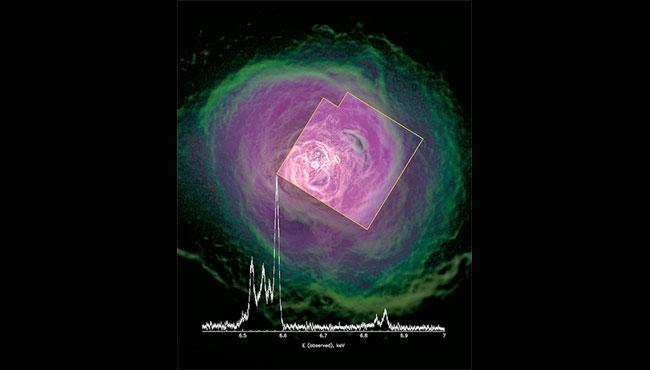Tanner crabs observed feasting at a bubbling methane seep on the deep seafloor in the northeast Pacific Ocean may be developing a way to adapt to climate change, says a marine ecologist from the University of Victoria whose work with Oregon-based researchers establishes for the first time that a commercially-harvested species is feeding on the energy source.
Researchers with Ocean Networks Canada (ONC), an initiative of UVic, and Oregon State University discovered the crabs actively sifting through sediment and snacking on methane-filled bacteria, around 1.2 kilometres deep in the ocean off the coast of British Columbia. The research, published in the journal Frontiers in Marine Science, suggests the tanner crabs, often sold in markets as “snow crabs,” are using food sources other than phytoplankton, which ocean models predict may become sparser due to a warming climate.
The crabs were previously thought to exclusively eat phytoplankton so this study provides the first evidence that a commercial species like tanner crabs are partially deriving their nutrition from the seep itself.
“Evidence shows the crabs’ diet is diverse and includes bacteria that processes methane. This suggests that their populations may be able to adapt if their common food source becomes scarce. By studying and collecting these specimens, we can learn how a variety of sea-dwelling species are adapting to ongoing changes linked to climate change,” says Fabio De Leo, co-author of the study and senior scientist at UVic’s ONC.
Methane seeps, also known as cold seeps, are locations along continental margins where hydrocarbon-rich fluid seeps up from below the seafloor, often as methane. Seeps have been found to support species-rich chemosynthetic communities including clams and mussels that rely directly on the chemosynthetic energy provided by seep bacteria.
The study took place at ONC’s seafloor observatory. After capturing the unusual sight of a crab flipping near the seep due to a methane build-up on its chest, researchers collected specimens and found important biochemical markers in the crabs’ muscle, stomach tissues and contents. Researchers also observed the tanner crabs migrating. The combined findings suggest the crabs may be dispersing the food energy coming from the seeps to other seafloor-dwelling species.
“The thinking used to be that the marine food web relied almost solely on phytoplankton dropping down through the water column and fertilizing the depths,” says Andrew Thurber, a marine ecologist at Oregon State University and co-author on the study. “Now we know that this viewpoint isn’t complete and there may be many more facets to it.”
The results are a culmination of research that began in 2012 when the scientists first observed a dense aggregation of tanner crabs in Clayoquot Slope, the methane seep off the BC coast.
“Through collaborative research in Canada and beyond, this study further confirms how deep-sea ecosystems provide important ‘ecosystem services’ to humans, in this case in the form of crab fisheries stocks,” adds De Leo.













